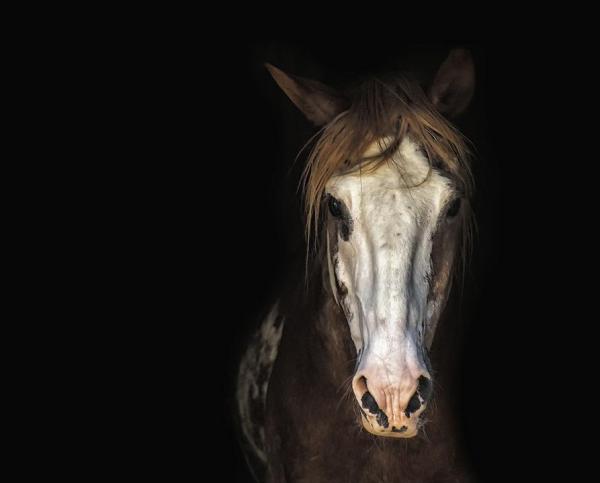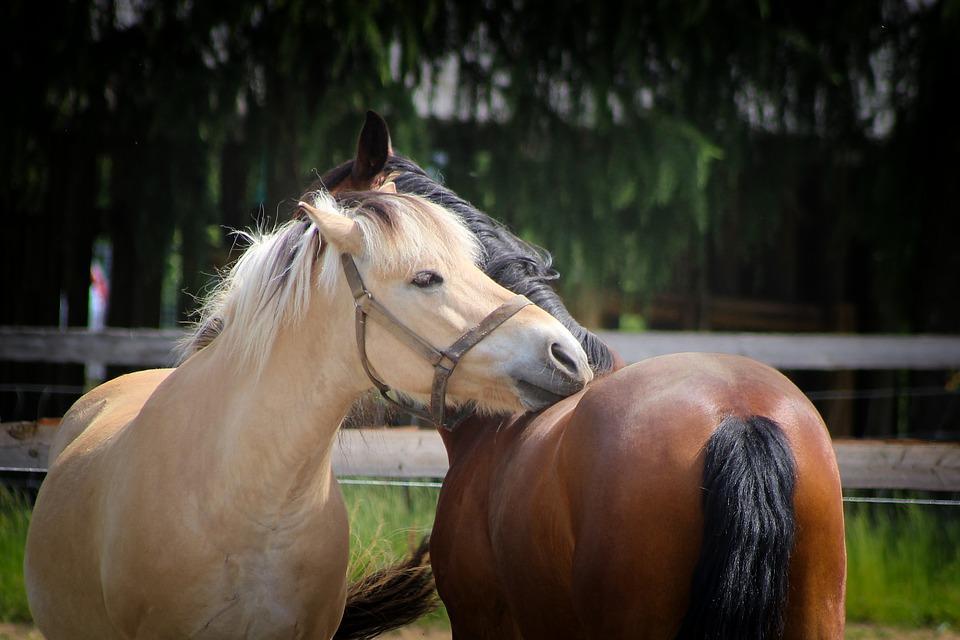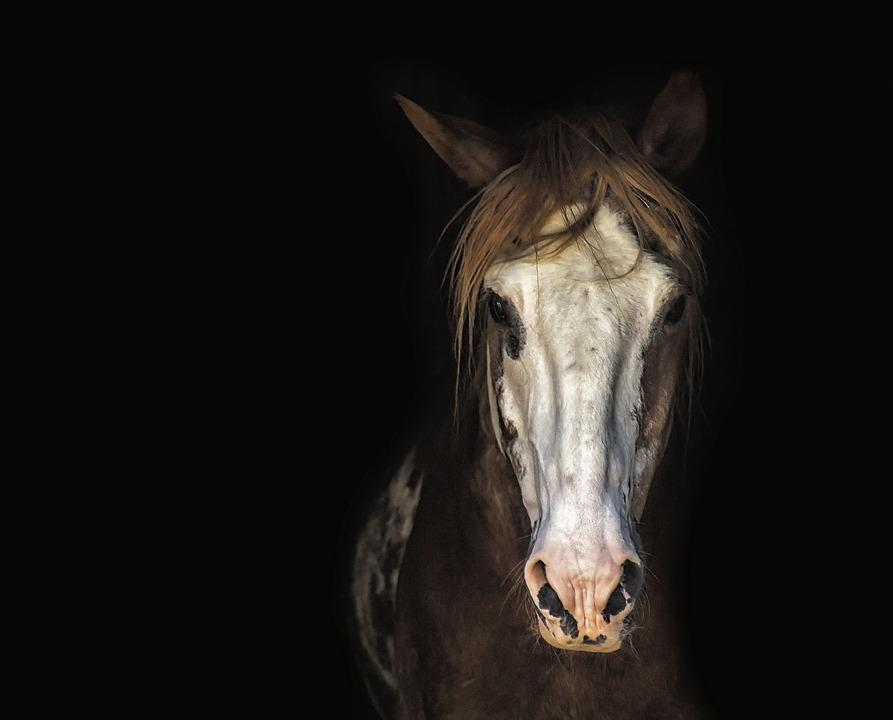Why do Horses Neigh?



See files for Horses
Since we were little we have been taught that, just like a cat ‘meows,’ a horse neighs. Have you also heard of a horse’s whinny? It’s important to know, however, that there is a slight difference between a horse’s neigh and whinny, which is usually lower in both pitch and frequency. If you are wanting to learn more about how horse’s communicate and the true significance of a neigh and whinny, this article is for you!
For more about, ‘‘Why do horses neigh?’’ keep reading here at AnimalWised and discover everything you need to know about this well-recognized horse sound.
How do horses communicate?
Horses communicate largely with their eyes, head positioning, ears, legs and body. A horse’s verbal communication is also incredibly important when it comes to horses expressing themselves. Verbal communication allows horses to express:
- Distance-contact with other horses.
- Enthusiasm.
- Avoiding contact with other horses they don’t like.
- Keeping a mare and her baby together.
- Communicate in the dark, keeping groups together.
Horse communication: scent
Horses also communicate through scent and/or odor, especially when it comes to establishing a relationship between a foal and its mother. Scent among horses is also incredibly important during courtship, allowing horses to offer each other sexual information.
Horse communication: physical
Communication through touch, caresses and scratching is also very important when it comes to horse communication. These gestures serve to communicate bonds between individuals. In addition, reciprocal grooming is a form of support among horses to help reduce stress and nervousness.
Body language communication in horses
Horses are highly sensitive to changes in body language (among both their own species and humans). Horses, therefore, react strongly to the most subtle changes.
Horses, as prey animals, are experts in communicating tension. Their alert posture, for example, serves to warn the rest of the pack of a threat. So if your wondering, ‘‘Can horses feel human emotions?’’ The answer is yes. If a human feels stressed or anxious, it would be difficult to hide this feeling from a horse.

Horse neigh sound
The neigh and horse whinny are just two of the many sounds horses make. Additional horse sounds include snorting, wheezing, roaring, courtship sounds and a mother’s call. Each one of these horse sounds are used to communicate different emotions.
A horse’s neigh is created when a horse passes air through the vocal cords, which changes according to the position of the throat muscles, tongue, opening of the mouth and position of the lips.
Unfortunately, there are certain practices that consist of cutting a horse’s vocal cords to prevent the horse from neighing. This practice is extremely dangerous and illegal. It is used to prevent a horse from distracting the bull during bullfighting. Some riders claim that if a horse neighs it could cause a problem within the ring. This, however, has no scientific basis. This same practice is carried out among falconry birds, other birds, dogs and cats and is highly discouraged.
If you have a horse, you’ll love our article where we list the best names for horses and mares.
Why do horses whinny?
So, why do horses neigh neigh when they see you? Horse sound analysis depends largely on the context. The 5 main reasons horses neigh or whinny include:
- Neigh: Communicating to the rest of the group a location, especially in the case that a horse has been separated from the herd.
- Neigh: When two ‘linked’ horses or a rider and a horse have been separated.
- Whinny: Horses whinny to greet their owner or another horse, this is especially common at feeding time.
- Whinny or neigh: can also transmit affection (dependent largely on context).
- Neigh or whinny: When it is frequent and prolonged, a horse is showing its joy. This is usually accompanied by slaps on the ground (without threatening intent).
One of the simplest ways to differentiate a horse neigh and horse whinny is by understanding that a whinny is a lighter and gentler form of a neigh. Did you know that feral, wild or semi-domesticated horses neigh/whinny more than those in captivity? This fact only emphasizes the importance of these horse sounds as a necessary form of communication between these species. For more, we recommend taking a look at our article where we discuss what are wild horses - horse subspecies around the world.
Understanding horse communication
In order to fully understand horse emotions, we need to pay particular attention to a horse’s body language. Horse body language chart states that:
- A horse’s tail is used to show fear, excitement or aggression.
- A horse’s leg movement and positioning can alert and warn of threats.
- A horse’s ears, which are one of the most important body parts when it comes to this communication, show fear, insecurity, curiosity, alertness, relaxation, etc. In addition, they can move them independently, which can indicate where a horse’s attention is directed. You should also know that if your horse’s ears are facing backwards, it is not happy and is warning you.
- The most complex part when it comes to understanding a horse is in the face. A horse’s face can express infinite emotions due to its anatomy. For example, drooping eyelids and lips evoke relaxation. Marked wrinkles around the mouth and nostrils warn that the horse is irritated. When a kind of triangle appears on the mouth, with tightened lips and a dimpled chin, it expresses tension. When a horses is grooming with others, they lose nose tension and their eyes become relaxed.
It’s important to remember that each and every horse is unique and carries different preferences. Not all horses are disturbed or irritated by the same thing. Horses are very complex animals, capable of creating strong links with animals of different species. Understanding a horse’s entire communicative repertoire can take years of dedication.

Horse sounds in words
So you may be wondering, ‘‘Why do horses snort when riding?’’ or ‘‘Why does my horse whinny at me?’’ As we’ve already stated, horses make several different sounds that all mean different things, depending on the context. For more about a general analysis of sounds horses make in words (in addition to neighs and whinnies), keep reading below:
- Snort: A horse’s snort is quite complicated to analyze. Some believe it occurs as a simple act when a horse needs to clear its nose, while others claim it’s a form of greeting. The general consensus, however, is that a horse’s snort in words means, ‘‘What’s this?’’
- Squeal or horse scream: this sounds usually has a negative association meaning, ‘‘Stop it!’’ It is often heard during horse courtship between mares and is also used as a warning sound.
- Groan & grunt: groans or grunts among horses are often associated with a positive emotion of ‘‘That’s nice!’’ or with tiredness, especially relevant after long walks.
- Roar or trumpet: this sound occurs when a horse is angry, confused or sacred, translating to ‘‘Be careful, i’m angry!’’ or ‘‘Stay away!’’
If you want to read similar articles to Why do Horses Neigh?, we recommend you visit our Facts about the animal kingdom category.
Feist, J. D., & McCullough, D. R. (1976). Behavior patterns and communication in feral horses. Zeitschrift für Tierpsychologie, 41(4), 337-371.
Goodwin, D. (2007). Horse behaviour: evolution, domestication and feralisation. In The welfare of horses (pp. 1-18). Springer, Dordrecht.
King, S. R., Asa, C. H. E. R. Y. L., Pluhacek, J., Houpt, K. A. T. H. E. R. I. N. E., & Ransom, J. I. (2016). Behaviour of horses, zebras, and asses. Wild equids: Ecology, management, and conservation, 23-40.
McCall, C. A. (1990). A review of learning behavior in horses and its application in horse training. Journal of Animal Science, 68(1), 75-81.
Ödberg, F. O., & Francis‐Smith, K. (1976). A study on eliminative and grazing behaviour—the use of the field by captive horses. Equine Veterinary Journal, 8(4), 147-149.







